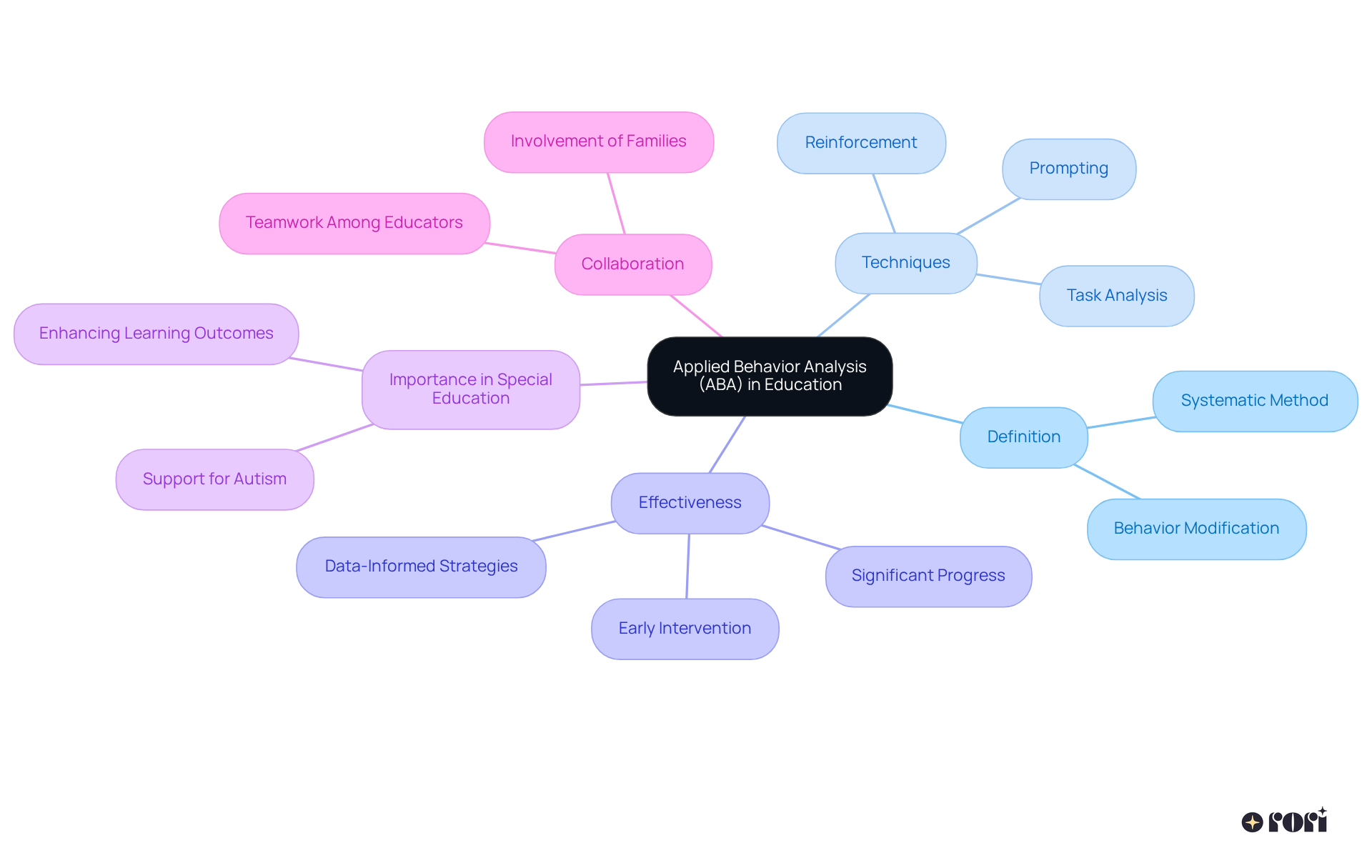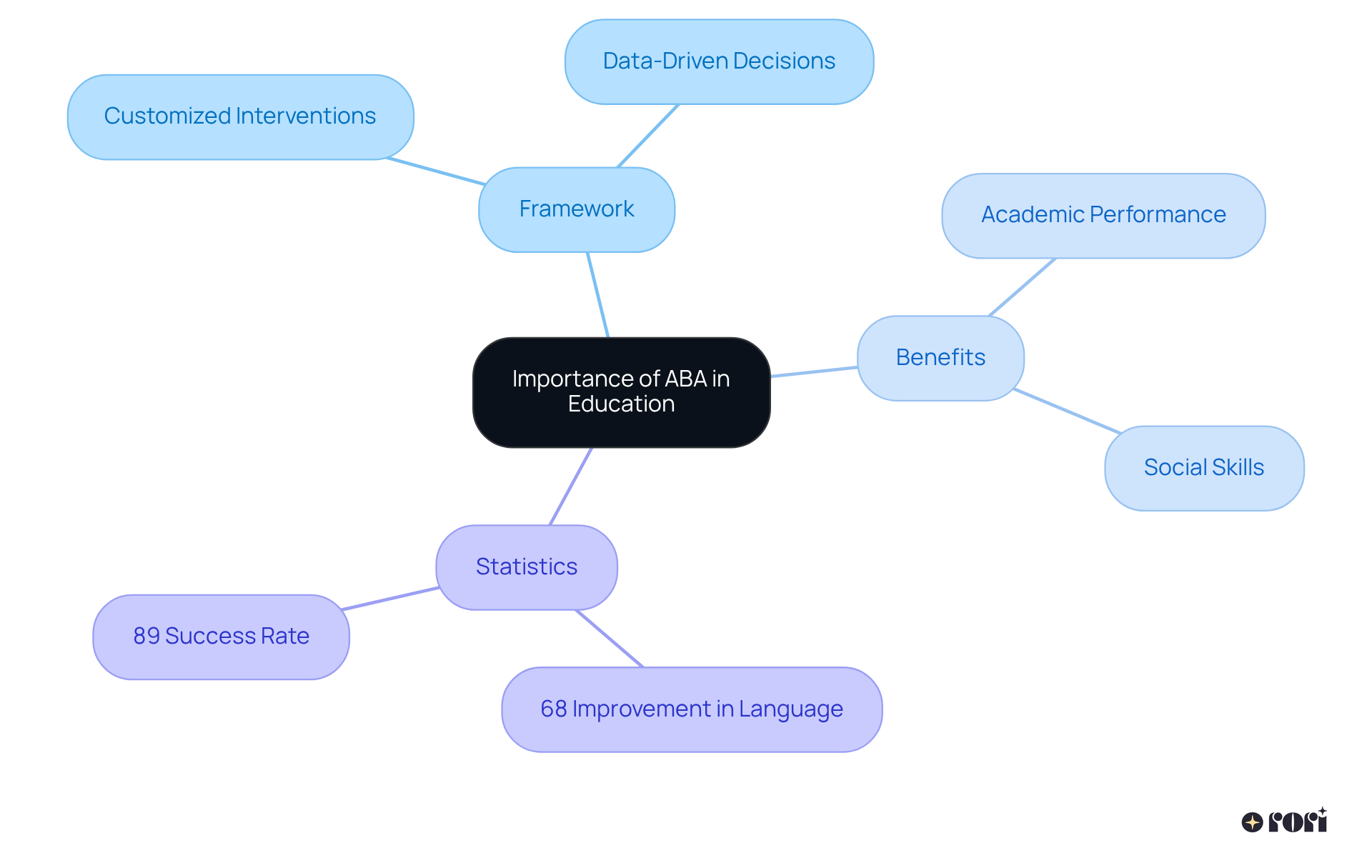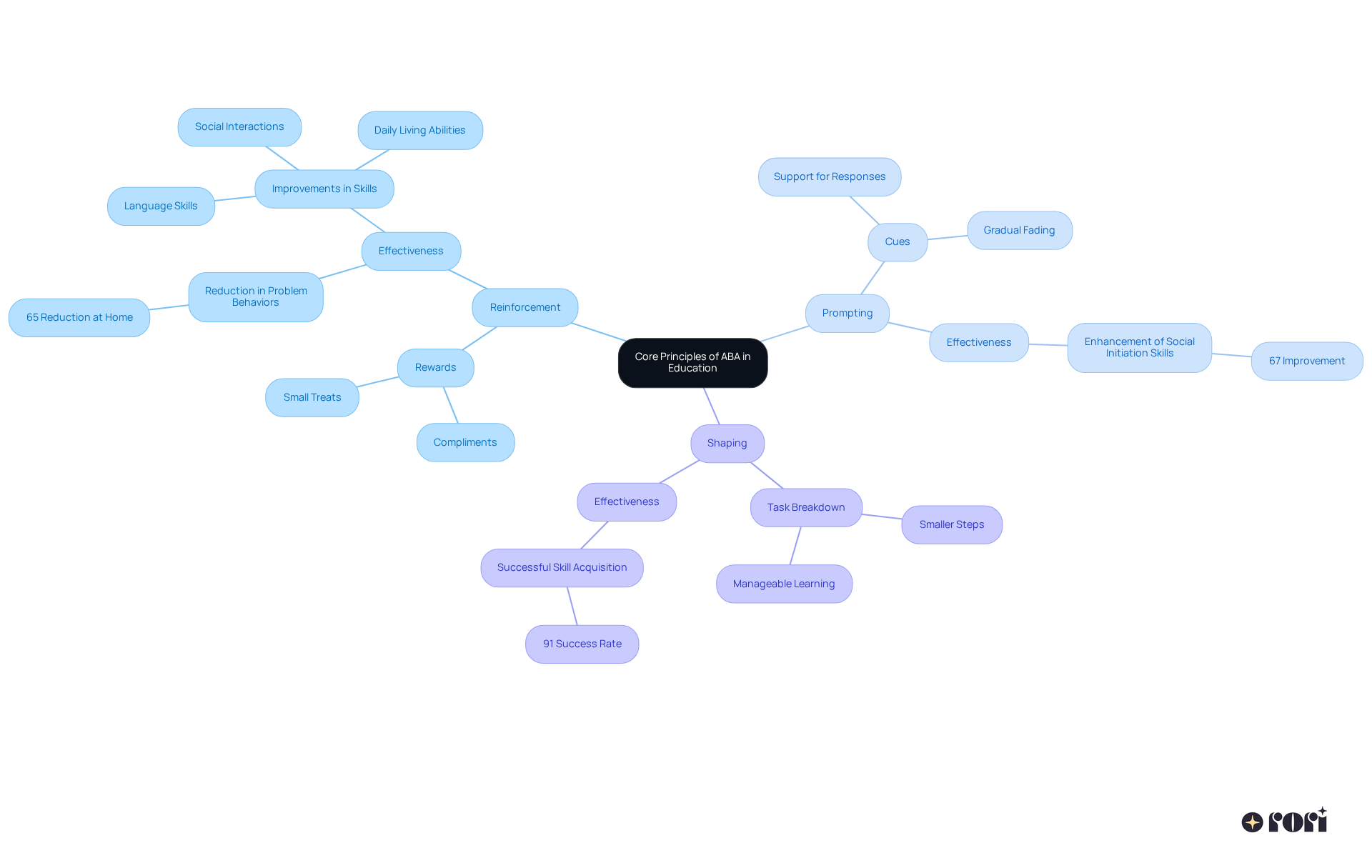Applied Behavior Analysis (ABA) in education is all about using behavioral principles to boost learning outcomes, especially for students with autism and other behavioral challenges. This approach is really effective, as it relies on data-driven techniques like reinforcement, prompting, and shaping. These methods work together to help kids develop skills and improve both their academic and social performance in school settings.
Let’s explore this together! ABA isn’t just a set of techniques; it’s a way to connect with students and support their growth. By focusing on what works, we can create a positive learning environment that truly makes a difference. If you’re a parent navigating these waters, remember you’re not alone. We’re here to help you every step of the way!
Understanding the intricacies of education can be quite a journey, often leading us to explore different methodologies that enhance learning experiences for all students. One approach that truly stands out is Applied Behavior Analysis (ABA). This transformative method is especially beneficial for individuals with autism and behavioral challenges.
In this article, we’ll delve into the fundamental principles of ABA and how its structured techniques can significantly improve educational outcomes. But with its rising prominence, let’s take a moment to ponder: what exactly does ABA stand for in education, and how can we effectively integrate its principles into our teaching practices?
Let’s explore this together!
Applied Behavior Analysis (ABA) is a systematic and scientific method that focuses on understanding and changing actions through careful observation and targeted interventions. In educational settings, understanding what does ABA stand for in education is crucial, as it is used to enhance learning outcomes by applying behavioral principles to teach new skills and reduce challenging behaviors. This approach can be especially beneficial for individuals with autism, as it emphasizes measurable behavioral changes and uses data-informed strategies to guide teaching practices.
Did you know that studies show individuals who receive at least 80% of the recommended hours of ABA therapy often demonstrate significant progress? This really highlights the effectiveness of this method! ABA includes a variety of techniques, like reinforcement, prompting, and task analysis, all tailored to meet the unique needs of each student.
Experts agree that early and intensive ABA therapy is essential for understanding what does ABA stand for in education, as it can lead to remarkable improvements in academic performance, making it a crucial part of special education programs. When ABA techniques are successfully implemented in classrooms, it usually involves teamwork among educators, therapists, and families. This collaboration ensures that therapeutic goals align with educational objectives, creating a supportive environment for learning.
With approximately 1 in 36 young individuals in the United States identified with autism spectrum disorder (ASD), it is clear what does ABA stand for in education and the . Let’s explore this together and see how we can support our children in their learning journeys!

The significance of Applied Behavior Analysis (ABA) and what does ABA stand for in education is truly profound! It offers a structured framework that helps educators tackle the unique challenges faced by students with autism and other behavioral disorders. By focusing on visible actions and how they interact with the learning environment, ABA paves the way for customized interventions that boost engagement and knowledge acquisition.
Research shows that individuals receiving ABA therapy often experience considerable gains in both academic performance and social skills. In fact, studies reveal that around 68% of participants see notable improvements in language abilities thanks to structured ABA interventions! Plus, ABA therapy boasts an impressive over 89% success rate in treating youth with autism spectrum disorder (ASD), which makes one wonder what does ABA stand for in education, highlighting its effectiveness in educational settings.
With roughly 1 in 44 youth in the United States diagnosed with autism, the in meeting the needs of this significant population is hard to overstate. Early intervention with ABA therapy leads to better long-term results for children with autism, making timely access to these services absolutely crucial. ABA empowers educators to make data-driven decisions, ensuring that interventions are not only effective but also tailored to the individual needs of each student.
This approach not only fosters academic achievement but also nurtures essential social abilities, which raises the question of what does ABA stand for in education as it proves to be an invaluable asset in special education environments. Let’s explore this together and see how we can support our children in their learning journeys!

When it comes to understanding what does ABA stand for in education, there are some that can really make a difference—like reinforcement, prompting, and shaping. These techniques are essential for helping kids develop skills and modify their behavior in educational settings, prompting many to wonder what does ABA stand for in education. So, let’s dive in!
Reinforcement is all about offering a little reward after a child does something great. It’s like giving a high-five for a job well done! For instance, when a student completes a task successfully, a teacher might give them a compliment or a small treat. This not only boosts motivation but also encourages them to keep up the good work. Research shows that structured reinforcement can reduce problem behaviors by up to 65% at home, and similar strategies in schools can lead to impressive gains in language skills, social interactions, and daily living abilities. Talk about a win-win!
Now, let’s chat about prompting. This technique involves giving cues or support to help a child respond in a specific way, and the best part? You can gradually fade that support as they become more independent. It’s super effective! Studies indicate that prompting strategies can enhance social initiation skills by an average of 67%. By providing just the right amount of help, educators can guide students through challenges and help them build confidence.
Shaping is another key principle. It breaks down complex tasks into smaller, manageable steps, making learning feel less overwhelming. This method is crucial when teaching new skills. In fact, a review found that systematic shaping led to successful skill acquisition in 91% of cases! Techniques like Discrete Trial Training (DTT) and Natural Environment Teaching (NET) are often used in ABA, leading to inquiries about what does ABA stand for in education, to support learning in both structured and natural settings.
Together, these principles create a comprehensive approach to behavior modification and skill development, illustrating what does ABA stand for in education. By integrating reinforcement, prompting, and shaping, we not only enhance learning outcomes but also foster a positive and inclusive educational environment. The Behavior Analyst Certification Board emphasizes focusing on teaching new skills rather than just reducing unwanted behaviors. This approach nurtures a love for learning and encourages students to actively engage in their education.
And let’s not forget about the exciting role of AI-powered technologies in ABA therapy! This innovative approach can further enhance the effectiveness of these techniques, providing tailored support for each child’s unique needs. So, let’s explore this together! We’re here to help you every step of the way!

Applied Behavior Analysis (ABA) is such a powerful educational tool! It really emphasizes understanding and modifying behavior to enhance learning experiences, especially for students with autism and other behavioral challenges. By harnessing the principles of ABA, educators can create tailored interventions that address academic needs while also fostering essential social skills. This ultimately leads to improved outcomes for all students.
As we reflect on the effectiveness of ABA, it’s clear that early intervention is crucial. Techniques like reinforcement, prompting, and shaping play a significant role. Plus, the collaborative efforts among educators, therapists, and families are key! The data shows that structured ABA interventions lead to substantial improvements in academic performance and social interactions, making ABA an invaluable asset in educational contexts.
When we embrace ABA in education, we’re not just helping individual learners; we’re also contributing to more inclusive and supportive learning environments. As the demand for effective educational strategies continues to grow, it’s essential for educators and stakeholders to advocate for and implement ABA practices. Let’s ensure that every child receives the support they need to thrive academically and socially. Together, we can pave the way for a brighter future! 🌟
What is Applied Behavior Analysis (ABA) in education?
Applied Behavior Analysis (ABA) is a systematic and scientific method that focuses on understanding and changing actions through careful observation and targeted interventions. It is used to enhance learning outcomes by applying behavioral principles to teach new skills and reduce challenging behaviors.
How does ABA benefit individuals with autism?
ABA is particularly beneficial for individuals with autism as it emphasizes measurable behavioral changes and employs data-informed strategies to guide teaching practices, leading to significant progress in learning.
What techniques are included in ABA?
ABA includes various techniques such as reinforcement, prompting, and task analysis, which are tailored to meet the unique needs of each student.
Why is early and intensive ABA therapy important?
Early and intensive ABA therapy is crucial as it can lead to remarkable improvements in academic performance, making it an essential component of special education programs.
How is ABA implemented in educational settings?
Successful implementation of ABA in classrooms typically involves teamwork among educators, therapists, and families, ensuring that therapeutic goals align with educational objectives to create a supportive learning environment.
What is the prevalence of autism spectrum disorder (ASD) in young individuals in the United States?
Approximately 1 in 36 young individuals in the United States is identified with autism spectrum disorder (ASD), highlighting the importance of ABA therapy in educational settings.